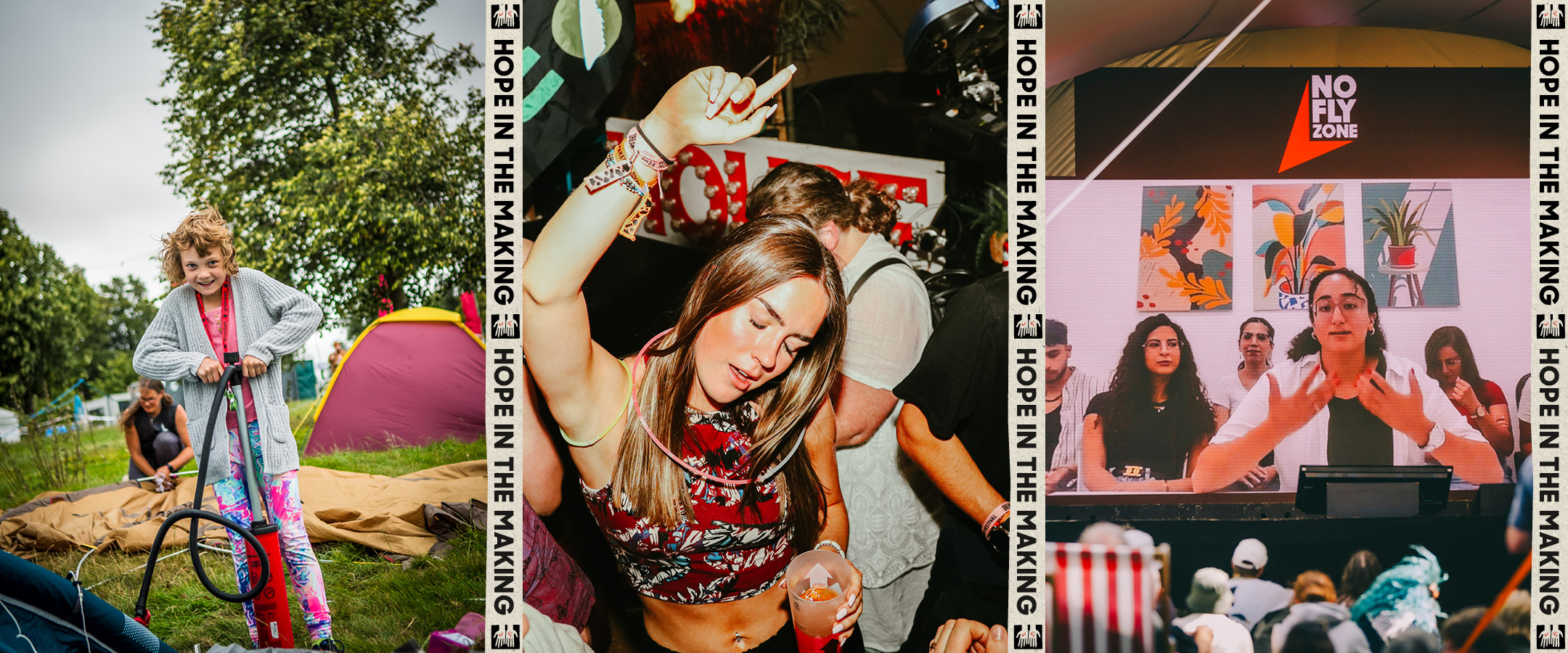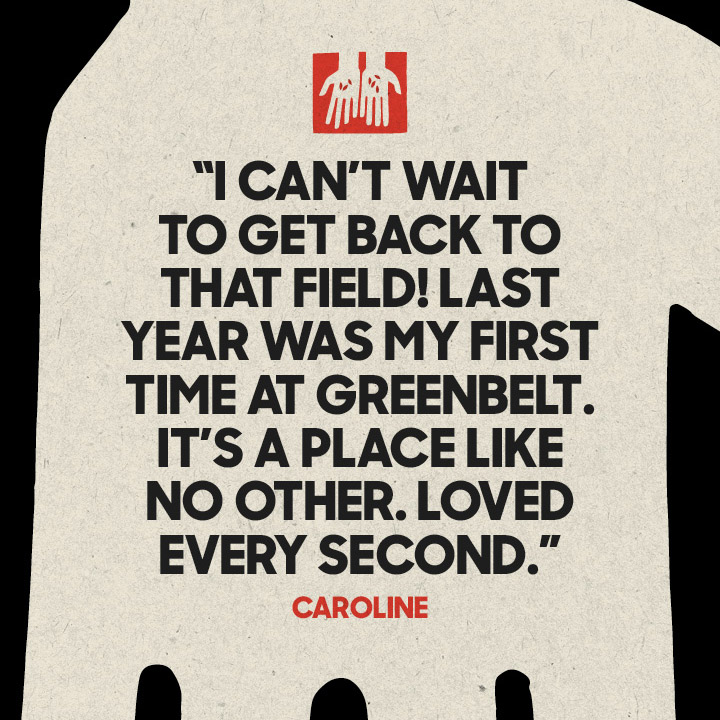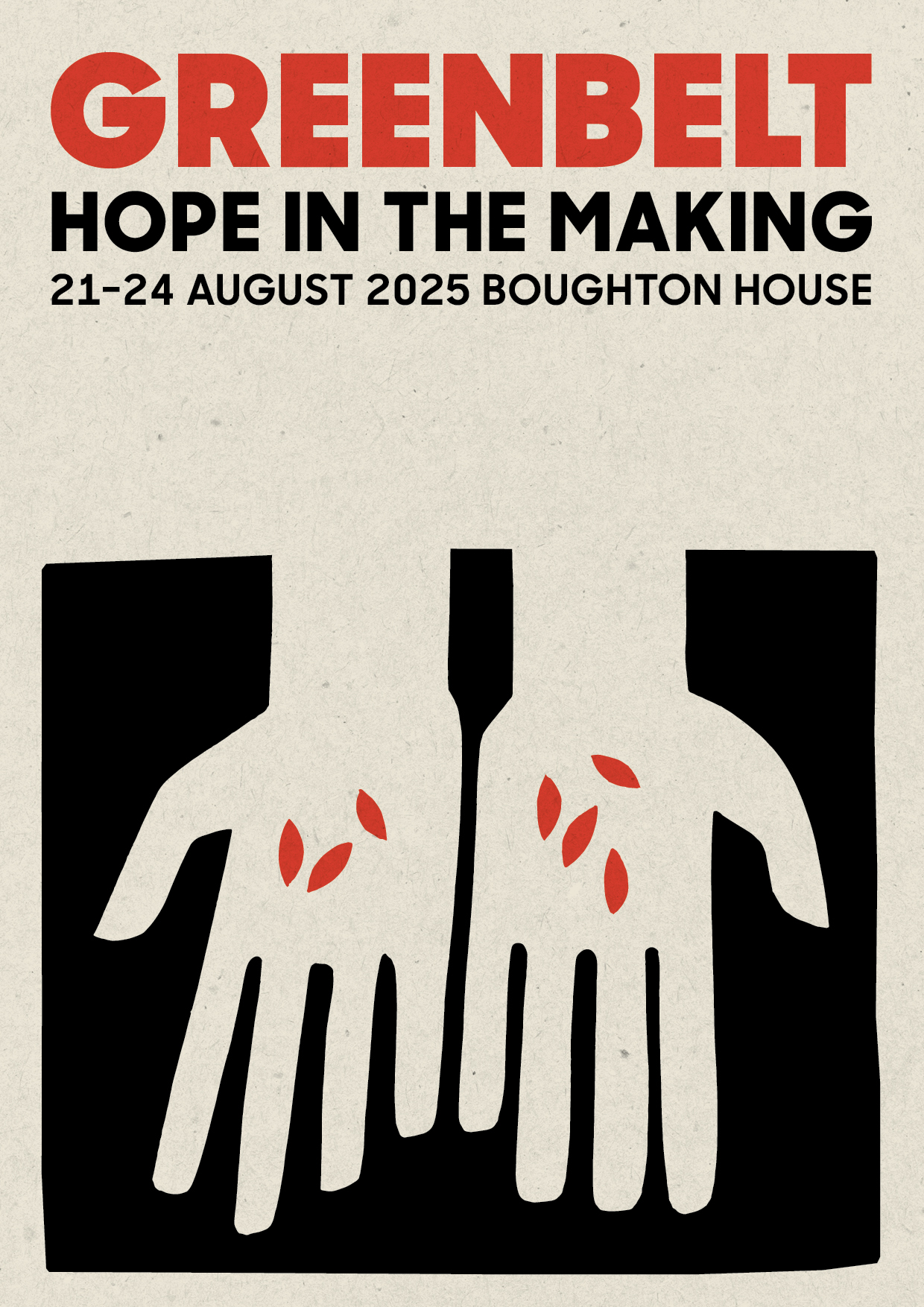If grief is the thing with feathers (at least according to the wonderful Max Porter), then perhaps hope is the thing with hands.
During our Communion Gathering at the festival last year, we asked Daoud Nassar from the Tent of Nations, just outside Bethlehem in the West Bank, what he does when things seems hopeless – surrounded as his family farm is on all sides by illegal Israeli settlements.
“I go out and I plant a tree,” he said.
The profundity of his response has stayed with us. Somehow we knew that it had to inform our theme thinking for Greenbelt 2025. In the midst of the chaos of the never-ending bad news cycle, we wanted to hold fast to the idea that Greenbelt must be somewhere to believe in, somewhere to belong to, and a place of hope (against all hope).
As Daoud and so many artists, activists, speakers and leaders have shown us over more than 50 years now: hope isn’t some sort of free-floating notion you might be lucky enough to get caught up in if you’re in the right place at the right time. Rather, it’s a practice, an attitude, a commitment. Something most often shaped by collaborating with, and belonging to, others.
Greenbelt is a project of hope. A space built temporarily up out of the ground where fresh possibilities are grown. As much a movement as a festival. Perhaps that’s partly why we’re still here, hanging on in there, while so many independent festivals are being forced to let go of the rails.
But how would we evoke – at least visually – this sense of Greenbelt being a space for ‘Hope in the Making’? The answer lay close to home.
Trees, seeds and hands have always been central in our visual language. This year, we decided that we needn’t go in search of anything new to add to our festival iconography, but instead we should mine back into what we already had. We wanted to dig deeper, go slower, feel richer. To work with what was already there. Right beneath our feet and in our hands.

For a while now, one of our key visual icons has been a pair of uplifted hands,* their palms open and outstretched, each cradling a few seeds. This image is at once fragile, delicate and precarious – but also brave, determined, generous, open-hearted and committed. We will offer our open hands, it says, to one another and to God. We will not clench our fists and turn inward, defensive in the face of the challenges we face. Instead, we will continue to hold out the seeds of hope, the kernels of love we are inspired to by the enduring memory and presence of Jesus Christ of Nazareth.
For ‘Hope In The Making’, we have inverted those hands. Instead of reaching up in celebration and devotion, they reach downward, into the soil of our lives and this world. Immersing themselves in the messiness and the work of making life and love possible. Planting their seeds deep into the ground in faith that, as the darkness recedes and the soil warms, so they will break through the surface with all the vitality and surprise that comes with each springtime.
The world feels pretty daunting right now. It’s scary even opening our news apps, turning on the TV or radio for the news. Facing this grim landscape, we wanted to remind ourselves of who we are, who we’re for, and why we do what we do. We wanted, in many senses, to go back to our roots. To strip things back, cut through the complexity, and dig the ground we come from.

When we begin to share our Festival Village, venues and site plan thinking for this year, you’ll see this turn to simplicity reflected in that, too. Growth that only leads to complexity and more stuff is something we’re actively turning away from and, instead, we’re trying to focus on the sort of growth that leads to real, sustainable, and long-lasting life.
So join us this summer as we gather together to remind ourselves once more of our rootedness in an ancient story of hope, and of the seeds of goodness planted in us. To draw strength and encouragement in realising that we are not alone in facing the turmoil of the world.
Rather than being trapped in the glare of the 24 hours news-cycle, frozen by a sense of dread, instead we can choose to roll up our sleeves, open our hearts and together be reminded that we must be the change we want to see in the world. The world might look and feel as though it is in ruins, and in so many senses it is. But we are called to be at work in those ruins, as Dougald Hine writes. Ours is the work of Hope in the Making. And this Greenbelt we will dig into that.

*The hands that have become so central to us were prints made by the Bristol-based print-maker Ruth Broadway and our designer of many years now, who has beautifully incorporated Ruth’s work into our visual brand, is Wilf Whitty at Ratiotype.

